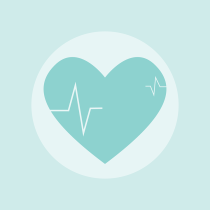Customer feedback is a critical piece of any commercial relationship, and its impact in health IT can be particularly valuable – but timing is everything. For other industries, customer feedback surveys and Likert scales at the end of a project may be effective means of measuring satisfaction. In healthcare, this type of qualitative feedback is often too little too late. IT vendors need to evaluate the customer’s perception of the product and its value at each stage of integration. Continue reading
customer feedback surveys and Likert scales at the end of a project may be effective means of measuring satisfaction. In healthcare, this type of qualitative feedback is often too little too late. IT vendors need to evaluate the customer’s perception of the product and its value at each stage of integration. Continue reading
Tag Archives: health
Harnessing Early Adopters in Health IT
 Part of the thrill of working in health IT comes from bringing something more than just a cool widget to market. As a nurse myself, I want to help fellow clinicians with software that solves problems. And, as part of the development process, we seek to partner with health systems to address their specific challenges.
Part of the thrill of working in health IT comes from bringing something more than just a cool widget to market. As a nurse myself, I want to help fellow clinicians with software that solves problems. And, as part of the development process, we seek to partner with health systems to address their specific challenges.
Of course, not every health system can serve as an IT partner – but luckily, some customers are in a position to play a larger role by acting as early adopters. Continue reading
Engaging Your Consumer: The New Wave of Healthcare Business
One of the major transformations in healthcare today centers on the development of the patient as a consumer. Patients are driving a demand for increased connectivity with their providers, and have a growing expectation for convenient and customizable care.
patient as a consumer. Patients are driving a demand for increased connectivity with their providers, and have a growing expectation for convenient and customizable care.
As the consumerization of healthcare continues to evolve, the patient will play a larger role in overall healthcare IT strategy. As a result, health IT vendors will need to address changing consumer demands in an age of instant gratification and convenience. What are the driving forces behind this shift?
How Can Hospital Culture Drive Improved Patient Care?
What makes a hospital great?  Each year, a variety of industry lists designate which hospitals are ‘the best,’ including U.S. News & World Report rankings, CMS star ratings, Leapfrog grades and Truven Health Analytics. While many of these rankings use important metrics such as excellence in clinical care, patient outcomes and physician satisfaction, they often fail to recognize the intangible piece of what it truly takes to make a great hospital – culture. Great hospitals embrace foundational values that support day-to-day operations and encourage innovative ideas for continuous improvement.
Each year, a variety of industry lists designate which hospitals are ‘the best,’ including U.S. News & World Report rankings, CMS star ratings, Leapfrog grades and Truven Health Analytics. While many of these rankings use important metrics such as excellence in clinical care, patient outcomes and physician satisfaction, they often fail to recognize the intangible piece of what it truly takes to make a great hospital – culture. Great hospitals embrace foundational values that support day-to-day operations and encourage innovative ideas for continuous improvement.
Empowering Women in Healthcare: Turning Dialogue into Action
 Gender inequality in the workplace is a systemic phenomenon that remains tough to crack, despite societal pressures driving increased scrutiny. Healthcare is no exception. In the past year and a half since we last reflected on the status of women in healthcare, statistics show more women in leadership roles. According to Rock Health Research, the number of female executives at Fortune 500 healthcare companies increased from 20 percent in 2015 to 22.6 percent in 2017. Women also continue to be well represented in the broader healthcare workforce.
Gender inequality in the workplace is a systemic phenomenon that remains tough to crack, despite societal pressures driving increased scrutiny. Healthcare is no exception. In the past year and a half since we last reflected on the status of women in healthcare, statistics show more women in leadership roles. According to Rock Health Research, the number of female executives at Fortune 500 healthcare companies increased from 20 percent in 2015 to 22.6 percent in 2017. Women also continue to be well represented in the broader healthcare workforce.
Part Two: Our 2018 Health IT Wish List
 The healthcare IT industry enters 2018 with a lot of potential, along with the need to overcome structures that have historically stunted progress. What is on our health IT wish list? AirStrip is feeling optimistic about the industry’s direction in terms of broader collaboration for building up truly interoperable systems to improve patient care, and overall health system stability.
The healthcare IT industry enters 2018 with a lot of potential, along with the need to overcome structures that have historically stunted progress. What is on our health IT wish list? AirStrip is feeling optimistic about the industry’s direction in terms of broader collaboration for building up truly interoperable systems to improve patient care, and overall health system stability.
Part One: A Look Back on Health IT in 2017
 2017 was a roller-coaster ride for healthcare, marked by exciting innovation, damaging cyberattacks, periods of lulls and disruptive change. As we enter a new year, it is important to celebrate the industry’s successes in 2017, and reflect on the ways these changes, incidents, and regulations both pushed health IT forward and established a foundation for 2018. From the consumerization of healthcare, to the implications of a changing reimbursement structure, to increases in health IT M&A, here is what three AirStrip executives and consultants identified as the most impactful change in health IT last year:
2017 was a roller-coaster ride for healthcare, marked by exciting innovation, damaging cyberattacks, periods of lulls and disruptive change. As we enter a new year, it is important to celebrate the industry’s successes in 2017, and reflect on the ways these changes, incidents, and regulations both pushed health IT forward and established a foundation for 2018. From the consumerization of healthcare, to the implications of a changing reimbursement structure, to increases in health IT M&A, here is what three AirStrip executives and consultants identified as the most impactful change in health IT last year:
2018: Shifting Healthcare’s Mindset to the Mobile Patient
 This past year, 2017, has been a challenging year for many industries, and healthcare is certainly no exception. Not only are there major challenges connected to an increasingly aging population and outdated healthcare infrastructure, but the industry is also adapting to the policies associated with a new presidential administration. While technology will continue to be a key part of the future of healthcare, one of the biggest changes will be a shift in mindset from mobile technology to mobile patients.
This past year, 2017, has been a challenging year for many industries, and healthcare is certainly no exception. Not only are there major challenges connected to an increasingly aging population and outdated healthcare infrastructure, but the industry is also adapting to the policies associated with a new presidential administration. While technology will continue to be a key part of the future of healthcare, one of the biggest changes will be a shift in mindset from mobile technology to mobile patients.
Connecting to Patients and Each Other through Technology
 As an anesthesiologist, my goal is to make the hospital a better, more efficient place to work so that I may provide the best possible care to my patients from the moment they come under my supervision. As part of this, improving a patient’s health record – and our access to it – by using effective mobile technology is an important step to providing holistic care. With nearly half of a physician’s day devoted to administrative tasks, it feels as though the time we clinicians can spend with our patients is getting slimmer and slimmer. Consequently, we want the precious time we have with our patients to be valuable and ensure them that their concerns are being heard and addressed in an efficient manner.
As an anesthesiologist, my goal is to make the hospital a better, more efficient place to work so that I may provide the best possible care to my patients from the moment they come under my supervision. As part of this, improving a patient’s health record – and our access to it – by using effective mobile technology is an important step to providing holistic care. With nearly half of a physician’s day devoted to administrative tasks, it feels as though the time we clinicians can spend with our patients is getting slimmer and slimmer. Consequently, we want the precious time we have with our patients to be valuable and ensure them that their concerns are being heard and addressed in an efficient manner.
Finding Balance in Chaos
 The role of a nurse is a complex one. Not only is this individual responsible for the physical bedside care of multiple patients, but may also be called upon to offer emotional support for patients and their families. While this is an absolute honor and a privilege, it can also be emotionally draining and lead to burnout syndrome or compassion fatigue. In order to ensure that patients receive the highest quality care, we must make sure that nurses have support for their own emotional well-being.
The role of a nurse is a complex one. Not only is this individual responsible for the physical bedside care of multiple patients, but may also be called upon to offer emotional support for patients and their families. While this is an absolute honor and a privilege, it can also be emotionally draining and lead to burnout syndrome or compassion fatigue. In order to ensure that patients receive the highest quality care, we must make sure that nurses have support for their own emotional well-being.
